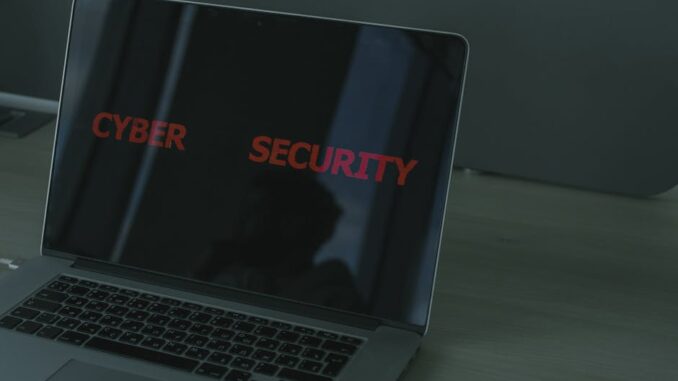
Summary
The number of SaaS breaches has increased by 300% in the last year. Traditional security measures are failing to prevent these attacks, highlighting the need for more robust, layered security solutions. The healthcare, government, and financial services sectors are the most targeted, with compromised identities being the primary attack vector.
Dont let data threats slow you downTrueNAS offers enterprise-level protection.
Main Story
You know, it’s pretty wild how quickly things are changing, isn’t it? The digital world, especially when it comes to Software-as-a-Service (SaaS), is just exploding—and not always in a good way. SaaS breaches have shot up by a staggering 300% in just the past year. I mean, think about that for a second. A 300% increase! It makes you wonder if what we’ve been doing for security is really cutting it. This isn’t just some abstract problem, either. Healthcare, government, finance… these are sectors taking a real beating. We’re talking serious financial losses and damaged reputations. So, let’s dig into what’s causing this mess, what’s failing with our defenses, and how we can actually improve things.
The boom in SaaS apps, it’s been a game-changer for business, no doubt. Scalability, cost-savings, better teamwork, you name it. But this move to the cloud, where sensitive data is held? Well, it’s painted a massive target on our backs, making us really vulnerable. These interconnected SaaS platforms—where everything talks to everything else—are now juicy targets for all kinds of bad actors.
And the traditional security measures? They just aren’t holding up. Things like firewalls and antivirus, they focus on the perimeter, like a wall around your castle. But in the cloud, it’s like the castle walls have vanished. The bad guys are already inside. Traditional methods struggle against sophisticated attacks using zero-day vulnerabilities, and social engineering tactics— things that aren’t on the old rulebooks. Even multi-factor authentication (MFA), which we’re all told is the gold standard—it’s not foolproof, as we’ve unfortunately seen, it can be bypassed through session hijacking or SIM swapping. I heard about one company, they had MFA enabled, they thought they were safe, and they got hit because someone managed to compromise the MFA via an exploit.
Most SaaS breaches start with compromised identities. Think about it: stolen credentials, often from phishing scams— that’s the entryway. Once a hacker’s in, because everything is so connected in SaaS, they can just move sideways, jump from app to app, pull out data, mess up services, and basically cause chaos. Some of these breaches happen in minutes. Minutes! There just isn’t enough time for those old-style reactive responses.
So, what can we do about it? Well, we’ve got to shift our perspective on cybersecurity and it needs to be multi-layered, combining strong identity management with advanced threat detection and real-time monitoring. It’s not a silver bullet kind of thing, you know? Here’s a breakdown of a few key strategies:
- Identity and Access Management (IAM) is critical. We need tough password rules, MFA with strong bypass protection and, crucially, least privilege access, only giving people the bare minimum they need to do their jobs.
- We need to think about Advanced Threat Detection. AI-powered solutions—ones that learn from data—can find unusual stuff in real time, helping us stop threats before they explode.
- Real-time Monitoring is key. Continuous watch over SaaS systems plus quick, automatic responses can minimize the damage from successful breaches.
- Security Awareness Training — You can’t just rely on the tech, people need to know about phishing and social engineering, and how to make a strong password. It’s surprising how many people still use ‘password123’.
- A Zero Trust approach is a step in the right direction, assuming nothing is trustworthy, and always verifying access. That adds another layer, which makes it harder for hackers.
- And lastly, it’s vital to share threat intel, work with others and get better at spotting new threats. A problem we all face will only be resolved if we face it together.
Ultimately, this threat is serious, we need to be active and comprehensive, not reactive. We’ve got to move past those old defenses, focusing on strong identity, threat detection, and fast reactions. By investing in solid security solutions and teaching people about best practices, companies can better handle the risks that come with using SaaS and safeguard their data. As SaaS continues to change, so too will the way we protect it. So, the future of SaaS security rests on being proactive, smart, and flexible, always keeping one step ahead of these ever-changing cyber threats.


300% increase? So, basically, if my data was a toddler, it’d have the growth spurt of a baby giraffe! Time to get serious with security, or we’ll all be swimming in data breaches.
I love the analogy! A baby giraffe growth spurt is exactly what it feels like. The comment highlights the urgency of the situation perfectly. It really emphasizes the need to implement layered security measures as a priority. Thanks for adding that perspective.
Editor: StorageTech.News
Thank you to our Sponsor Esdebe – https://esdebe.com
So, compromised identities are the party invite for hackers, huh? Guess ‘password123’ really is the VIP pass they’ve been looking for.
That’s a great way to put it! The idea of compromised identities being a ‘party invite’ really highlights how easily hackers can gain entry. It underscores why strong password practices and MFA are more vital than ever; we can’t let them in that easily.
Editor: StorageTech.News
Thank you to our Sponsor Esdebe – https://esdebe.com
A 300% jump? Guess our digital ‘firewalls’ are more like digital sieves these days. Makes you wonder if we should just start sending data via carrier pigeon.